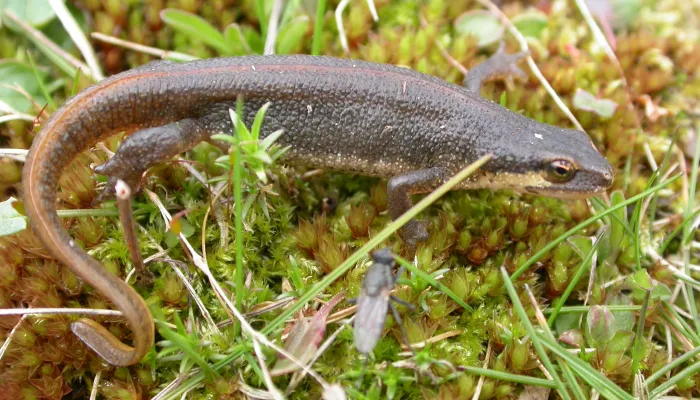| Statistics | |
|---|---|
| Length: | 7cm - 9cm |
| Average Lifespan: | Up to 10 years |
The palmate newt looks similar to the smooth newt, but favours shallow pools on acidic soils like heathlands. During the breeding season, males grow distinctive black webbing on their hind feet.
About
Newts are amphibians, breeding in ponds during the spring and spending most of the rest of the year feeding on invertebrates in woodland, hedgerows, marshes and tussocky grassland. They hibernate underground, among tree roots and in old walls. The palmate newt is very similar in appearance to the smooth newt, but prefers shallow pools on acidic soils. As such, it is more likely to be found in upland areas and on heaths and moorlands than other newt species.
How to identify
Our smallest newt, the palmate newt is peachy-yellow underneath, with a few spots on the belly, but none on the throat. In the breeding season, males develop black webs on their hind feet and have a thin filament at the end of their tail. Females are difficult to distinguish from female smooth newts.
Did you know?
The palmate newt is named after the black webbing which develops on the male's back feet during the breeding season - something other newts do not have.

